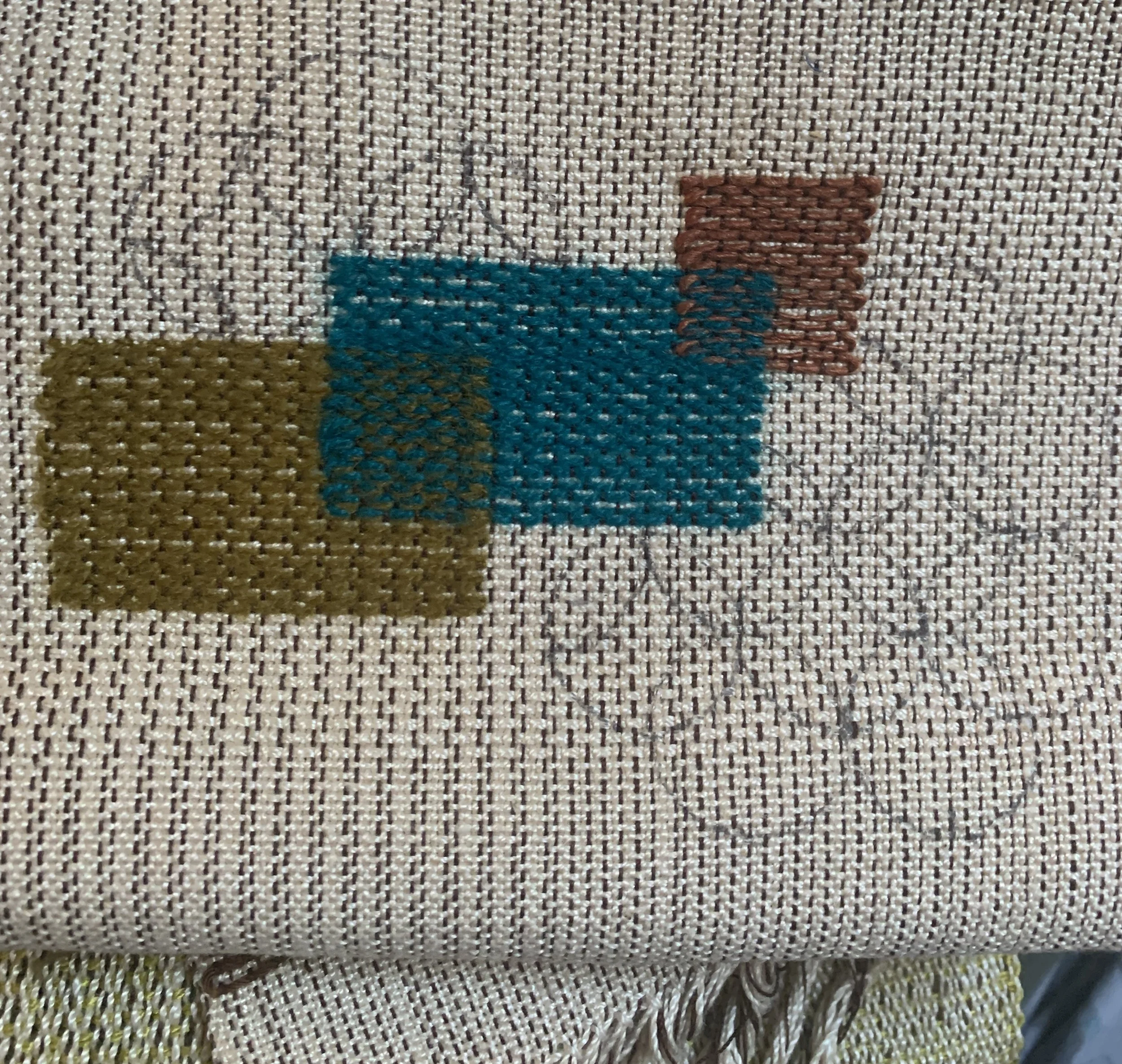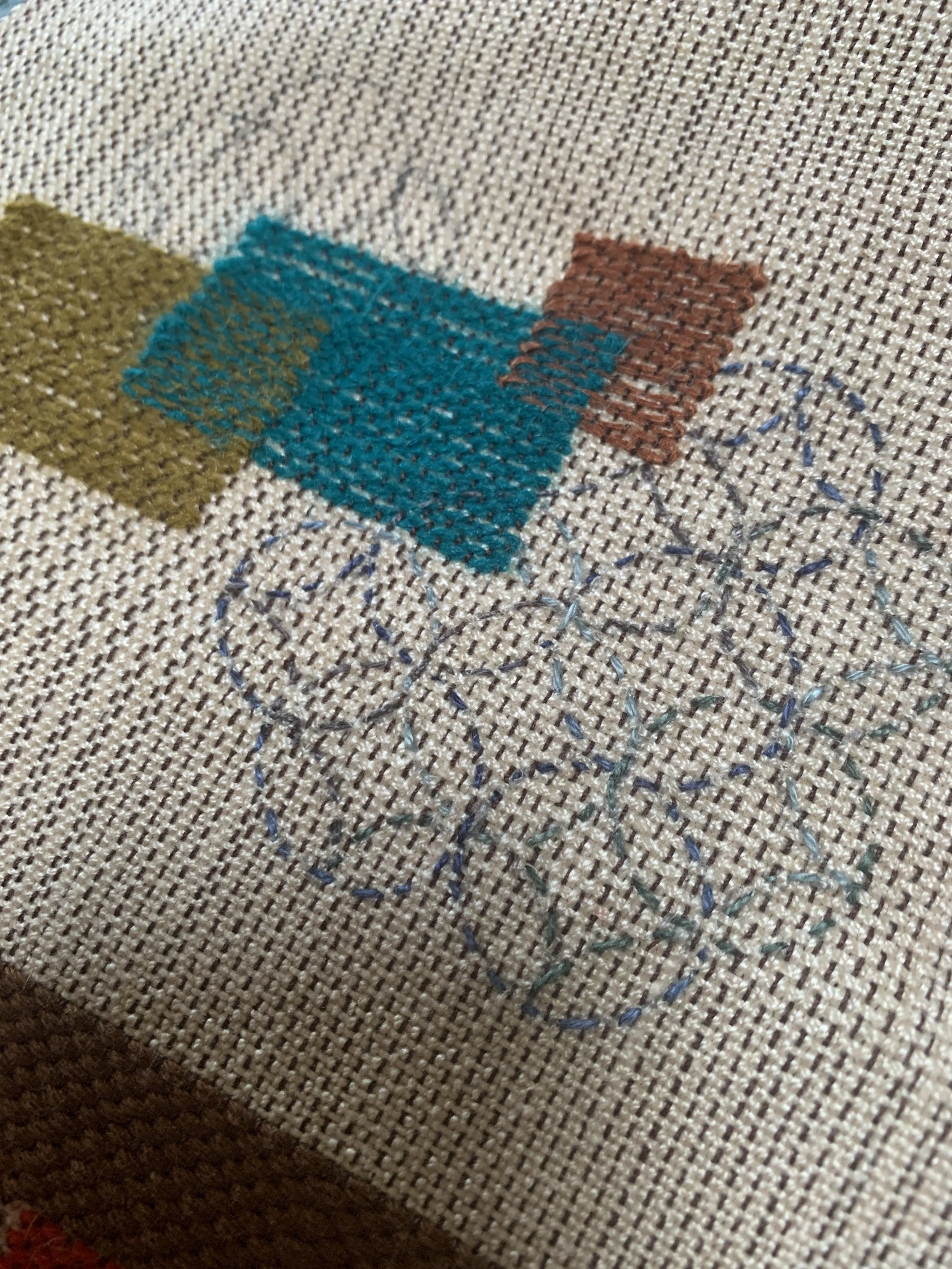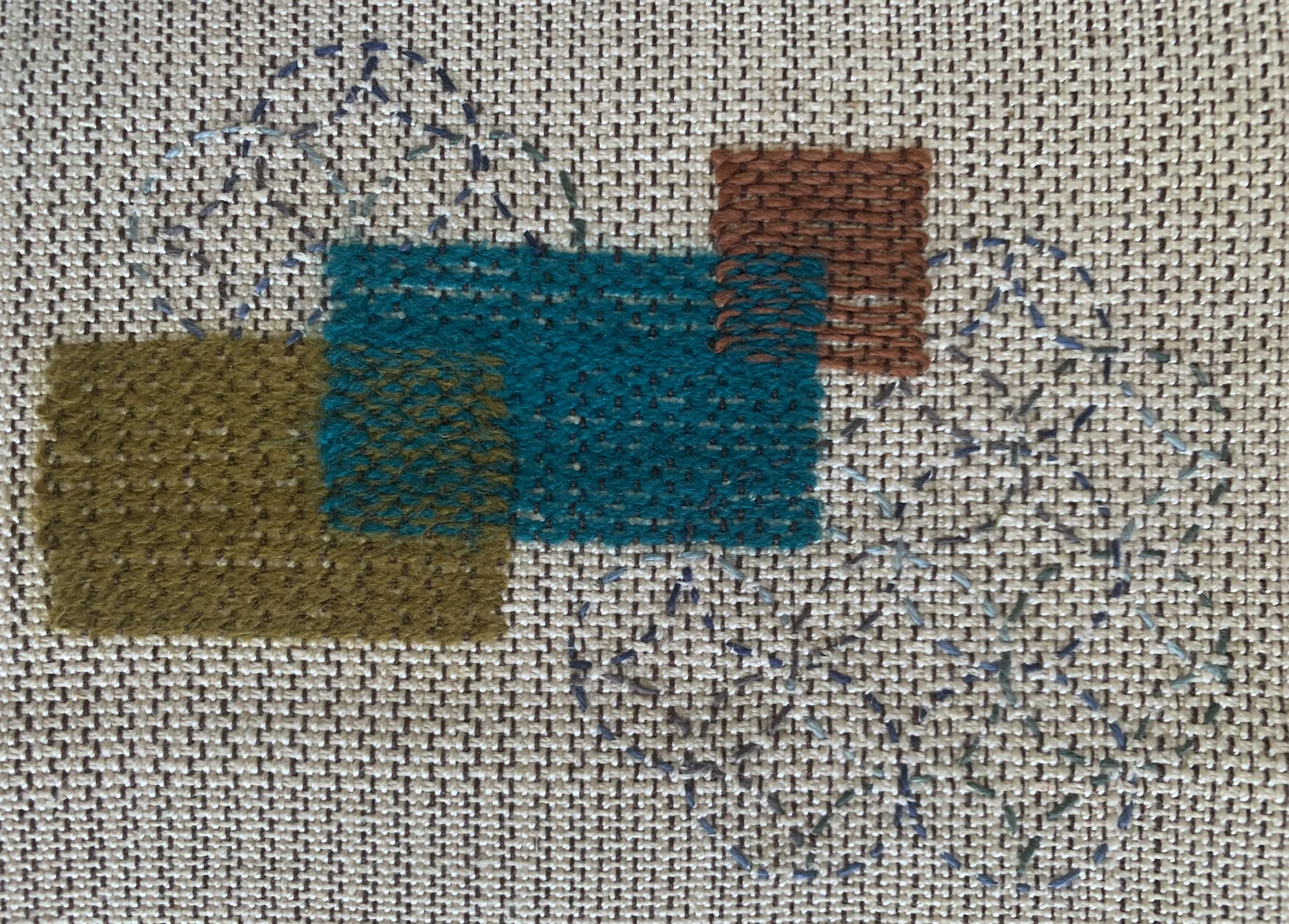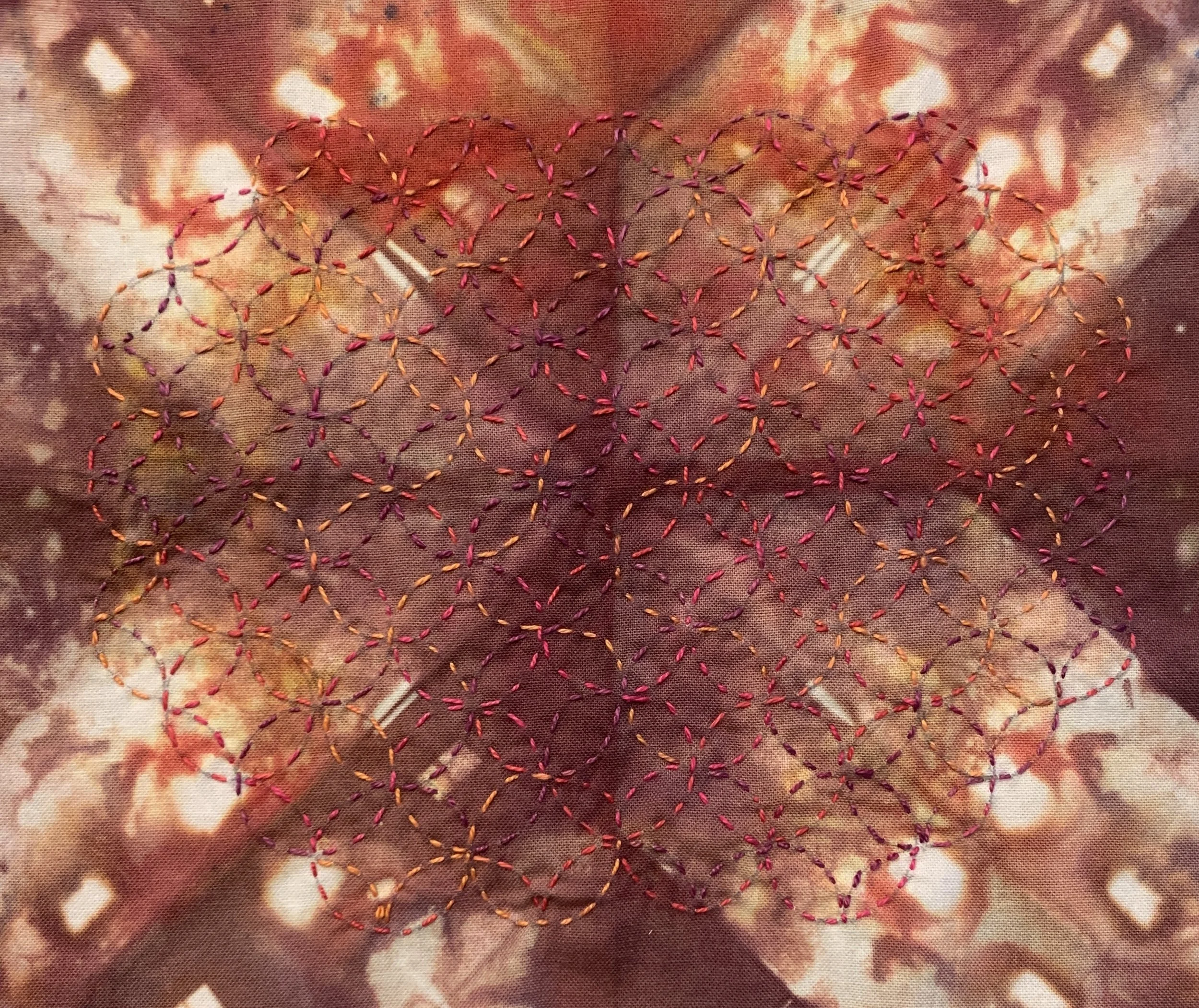Finding Rhythm with Sashiko
Handwoven fabric provide a great cloth for Sashiko stitching. Thanks to a course on Domestika with Atsushi Futatsuya, Sashiko Garment Maker I am exploring new learnings, patterns, and finding my rhythm with Sashiko. Learning to stitch on intersecting curves after using a circle to make a grid has been helpful. Shippo (seven treasures) is well known in many parts of Japan and often seen on Kimono.
I was given a workshop sampler from a Fort Wayne Weavers Guild friend last year. There was a small section of woven inlay on the surface of the cloth (a Theo Moorman sample I speculate) in rectangles with a lot of white space. I used a 1” circle template to mark a grid on the handwoven cloth with a fabric pen. The Shippo will add some geometric interest to the rectangular woven inlay. One purpose of Sashiko in Japan was to add strength to the woven cloth or fabric. In stitching, Atsushi recommends working in a continuous curve while stitching. I found this method to be easy to use as I did not need to focus on my stitch length while finding my stitching rhythm. I chose a #8 Wonderfil Perle Cotton EZM1068. Although I could have used a heavier Sashiko yarn to help the pattern to show up more, it was an easy yarn to work with that would not overpower the woven inlay. As I progressed, I decided to add in more detail by filling in with curves on the inside of the circle from Step 1 to 3.
So finding my rhythm with Shippo Sashiko was an important exercise. As Atsushi indicates, I found myself relaxing and most importantly I was thinking about the joy of having my weaving friend, Carol Bower provide me with such a beautiful piece of handwoven sample. I’m already doing some color studies that I might incorporate for fabric collage. In addition, I’m practicing Shippo Sashiko on some of my ice dyed fabric.
On a different note, I recently took two weavers, Brenda Schori and Martha Town to see a woven glass kimono by Markow & Norris acquired as part of the Fort Wayne Museum of Art’s permanent collection. So many beautiful and inspiring color interactions on this sculptural piece. A link above will take you will take you to see more woven glass kimonos.





